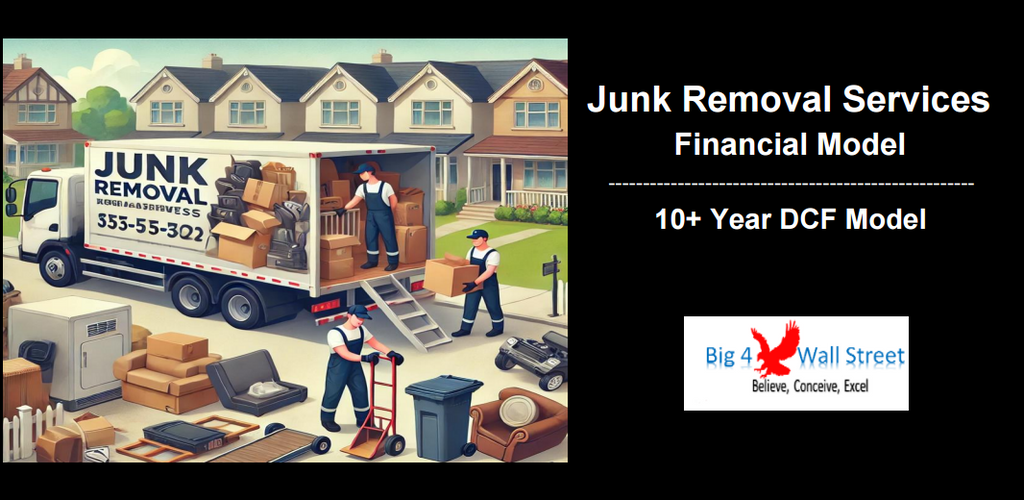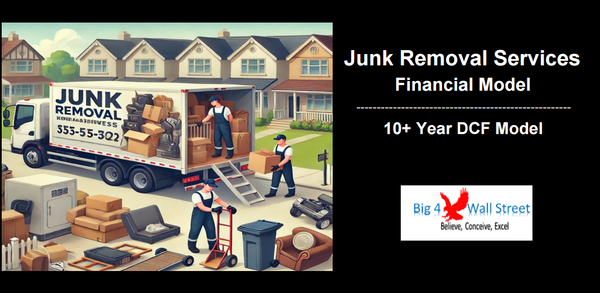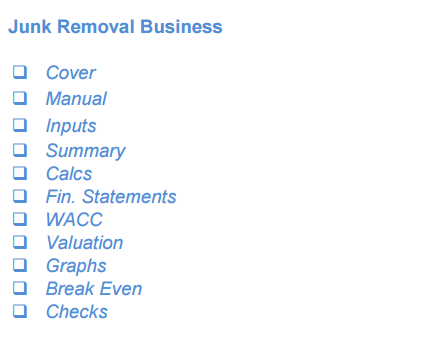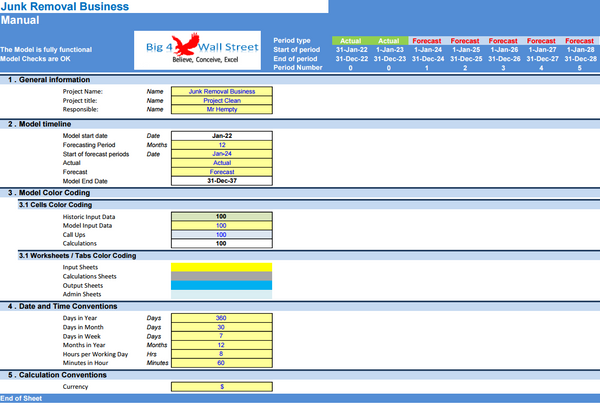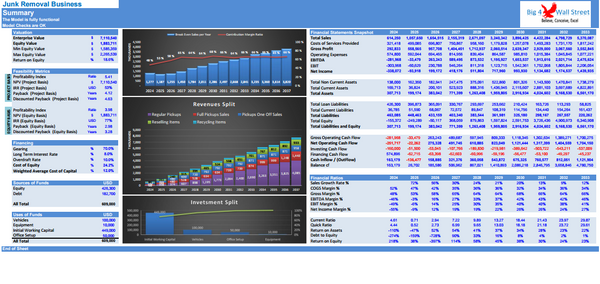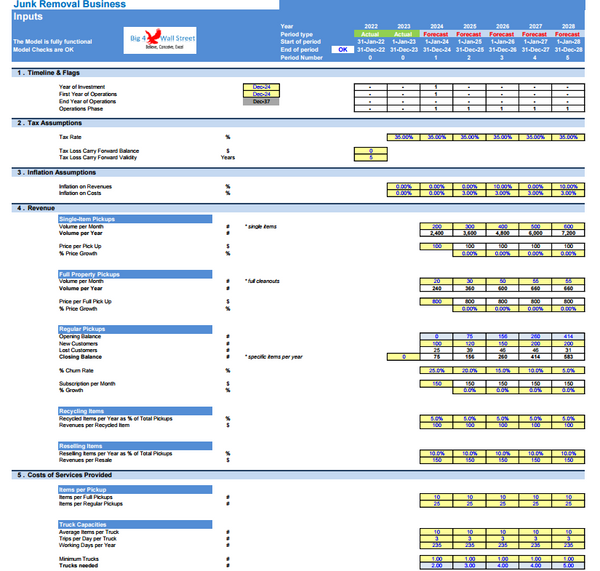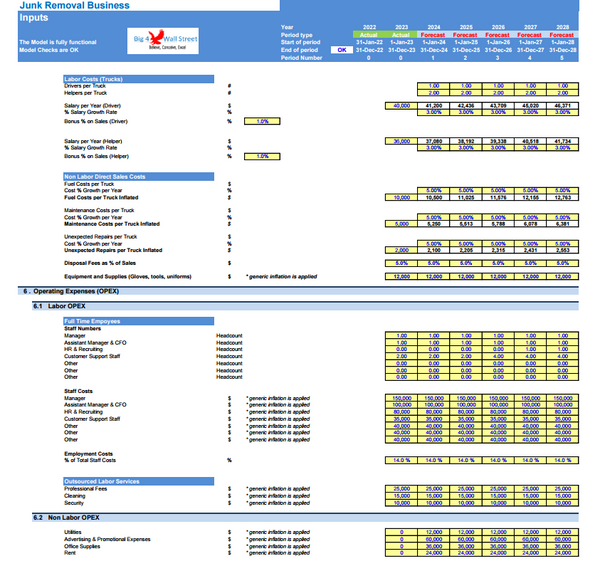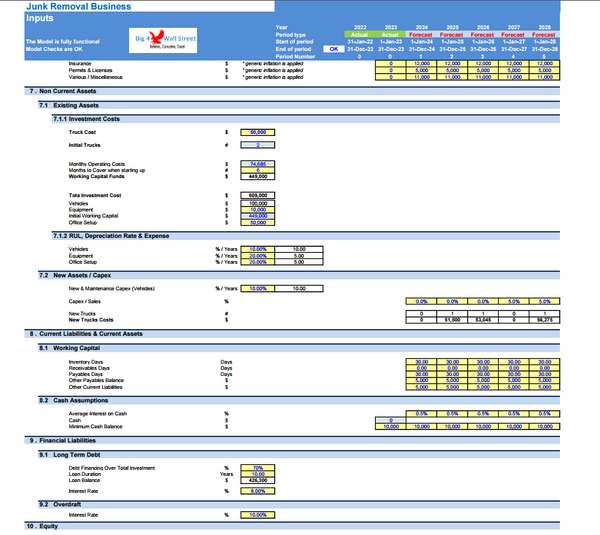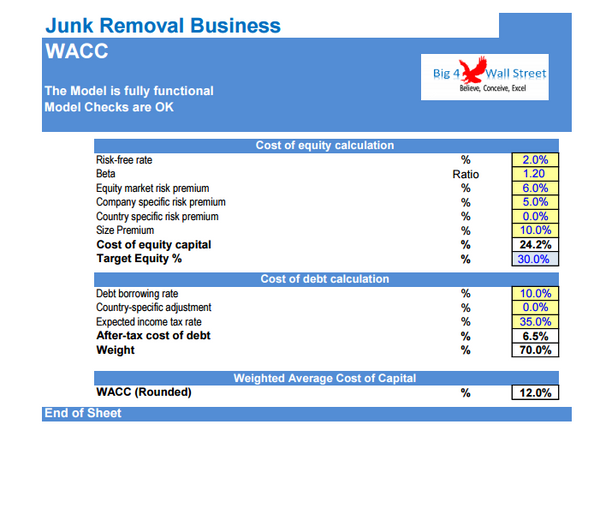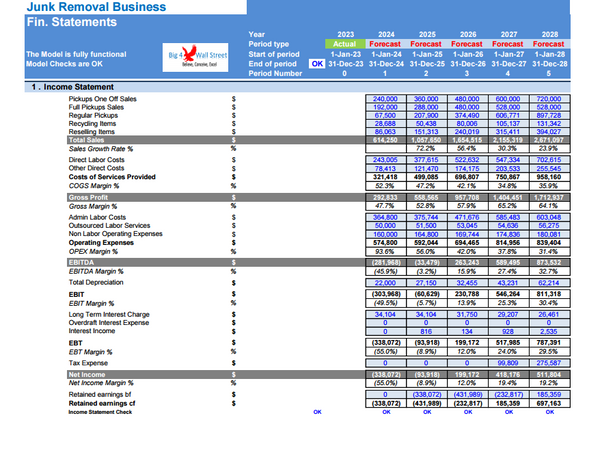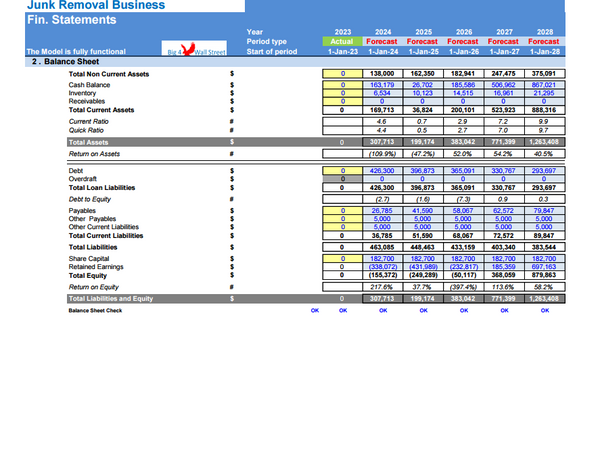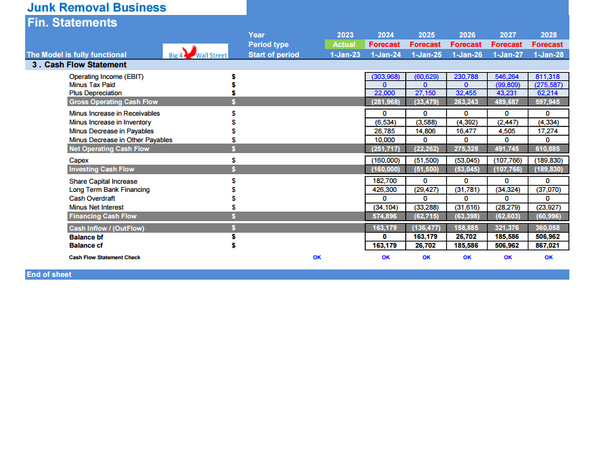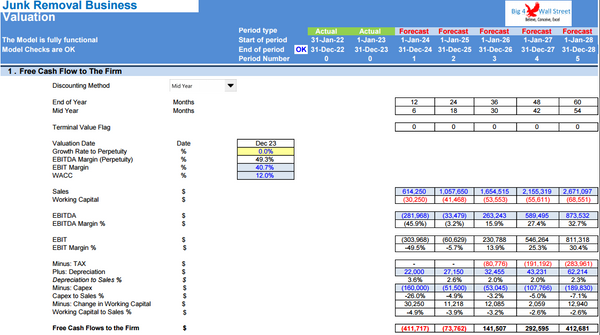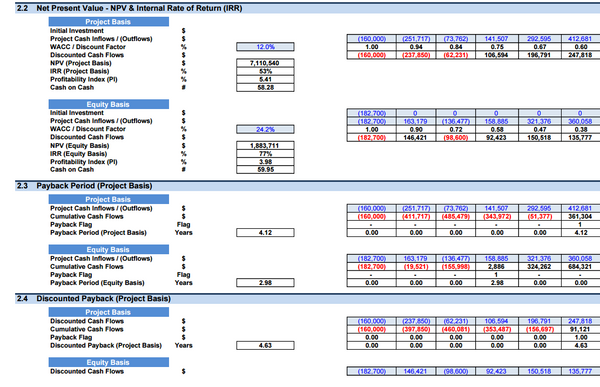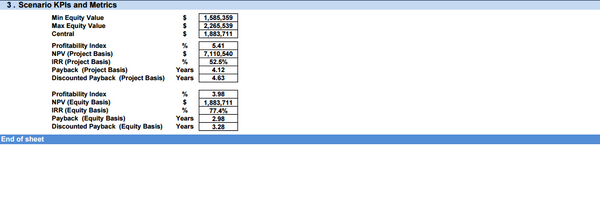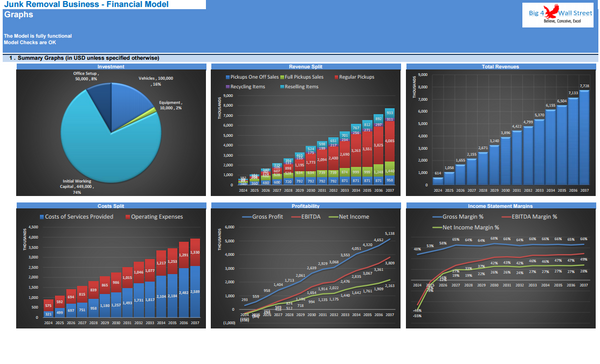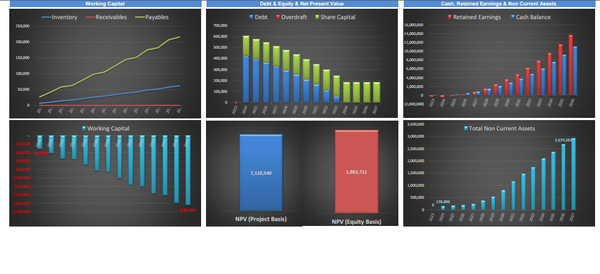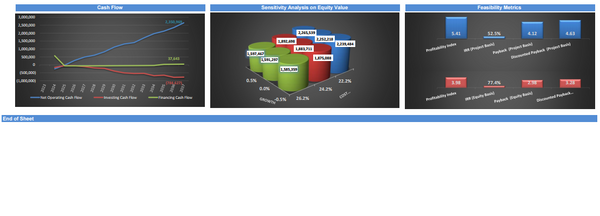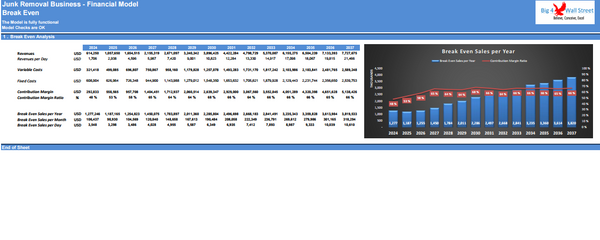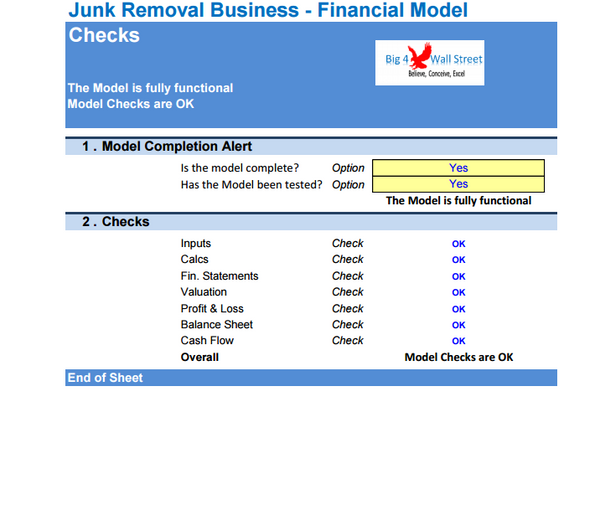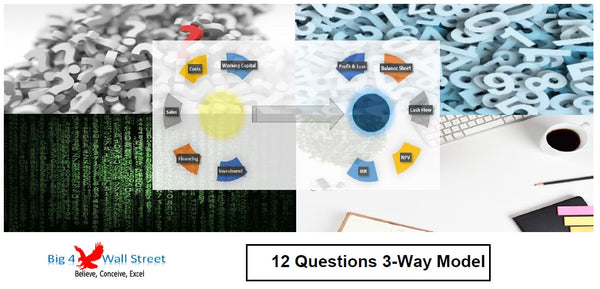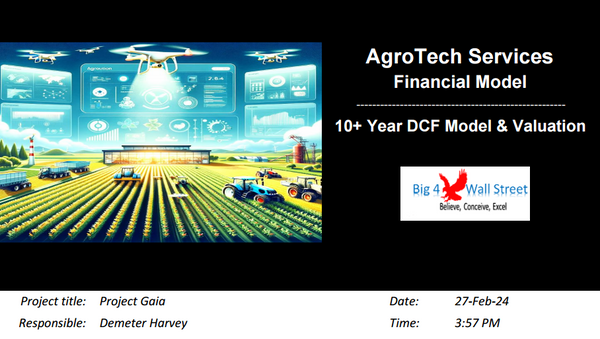Junk Removal Services - Financial Model (10+ Yrs. DCF and Valuation)
The Junk Removal Services Business Financial Model with a 10+ Years DCF (Discounted Cash Flow) and Valuation provides a comprehensive analysis of the financial aspects of a junk removal service. It includes detailed projections for service demand, operational costs, and revenue streams. This model helps in understanding the long-term financial performance, revenue potential, and profitability of the junk removal business, enabling informed decision-making and strategic planning. Additionally, it produces financial statements, valuation, and break-even analysis.
Key Components:
1. Service Demand: Projections for the number of junk removal jobs based on demand and capacity.
2. Operational Costs: Breakdown of costs including labor, transportation, disposal fees, and equipment maintenance.
3. Revenue Streams: Income from junk removal fees, recycling sales, and potential partnerships for reselling some items.
4. Capital Expenditures (CapEx): Investments in trucks, equipment, and technology.
5. 10+ Years DCF and Valuation: Long-term financial projections, including DCF analysis to assess the business's value and Investment KPIs (IRR, NPV, Payback).
6. Financial Statements: Projections of the income statement, balance sheet, and cash flow statement.
7. Break-Even Analysis: Calculation of the break-even point based on fixed and variable costs.
Key Benefits:
1. Informed Decision Making: Provides detailed insights into cost structures, revenue streams, and profitability.
2. Strategic Planning: Helps in planning service expansion, equipment upgrades, and market penetration strategies.
3. Profitability Analysis: Assesses the financial viability of different pricing strategies and service offerings.
4. Investment Appeal: A robust financial model to present to potential investors and secure funding.

